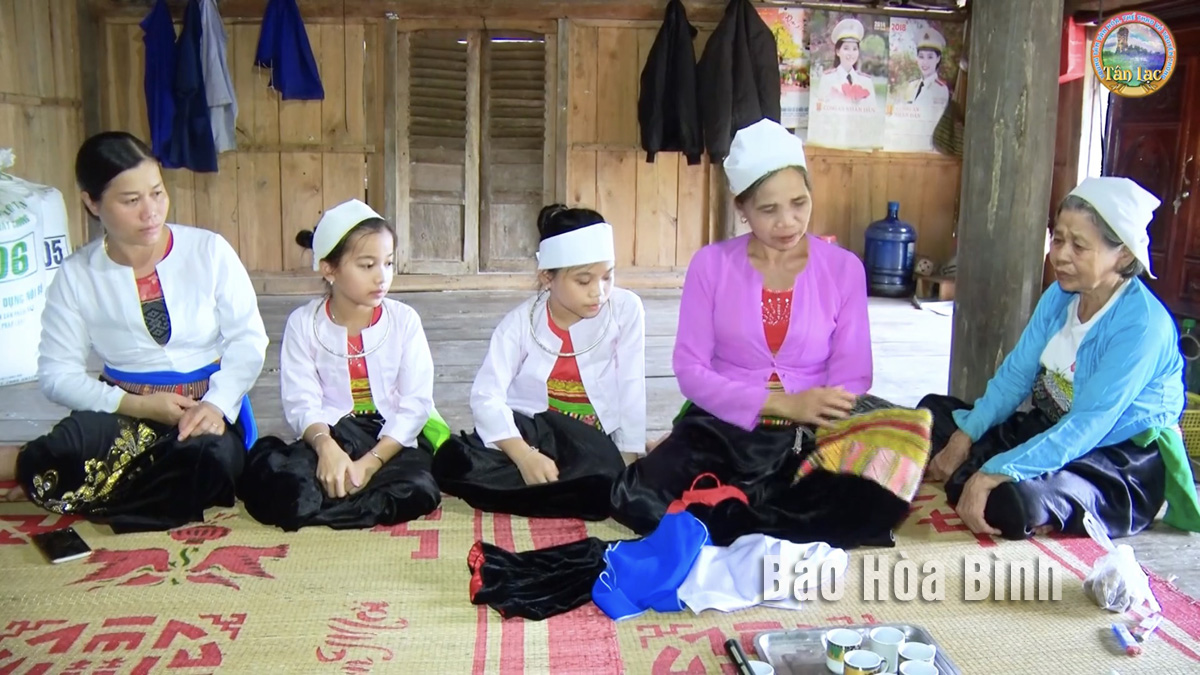
Along with the process of integration and development, traditional cultural identities of the Muong ethnic community in general, and Muong ethnic people in Tan Lac district in particular, are at risk of falling into oblivion. Therefore, many clubs have been established in the locality to preserve and promote the beauty of the ethnic group’s cultural identities.
Tan Lac district preserves Muong ethnic group’s cultural identities.
Bui Thi Luyen, head of Muong people’s cultural preservation and
promotion centre in Man Duc township's Muon Phoi residential area, said
previously in daily life and holidays, Muong ethnic people wore traditional
costumes and played gongs around their village with the aim of praying for a
peaceful year, good luck and a bumper crop. However, in modern life,
traditional costumes or gongs are no longer commonly used.
Muong people’s costumes have been adjusted to suit modern fashion trends.
Instead of using brocade fabric with manual embroidery, their costumes have
been made by synthetic fabrics with industrial print patterns. Belts were also
replaced by ready-made items. Not only costumes, the preservation of language
is also a big concern.
Bui Minh Hong, head of the Culture and Information Department of Tan Lac
district, said that currently, many clubs have been established in the district
such as Mo Muong club, and other clubs to preserve Muong language and costumes.
The district has encouraged its localities to continue to replicate the club
model to preserve the language and costume of the Muong people.
The People’s Committee of Lac Son district held a ceremony on April 28 to receive the provincial relic certificate for the ancient rock carving site at Suoi Co stream, located in My Thanh commune.
A special music show titled "The country is in the fullness of joy” has been held at Hoa Binh Square in Hoa Binh city in celebration of the 50th anniversary of the liberation of the South and national reunification (April 30, 1975–2025).
The People's Committee of Lo Son commune, Tan Lac district, has organised the local annual traditional stream fishing festival on April 19 - 20.
As a land deeply intertwined with human history and Vietnam’s millennia-long journey of nation-building and defence, Hoa Binh is often revered for its epic tales and legends.
Residents of Hoa Binh boast a rich cultural identity, reflected in their unique language, traditional attire, customs, and folk melodies – described as "sweet as honey, clear as a mountain stream.”
Lac Son district’s Vu ban town held the 2025 Truong Kha temple festival on April 12–13 (the 15th–16th days of the third lunar month). Since its revival in 2019, the festival has been organised every three years, preserving valuable intangible heritage while meeting the community’s cultural and spiritual needs.



